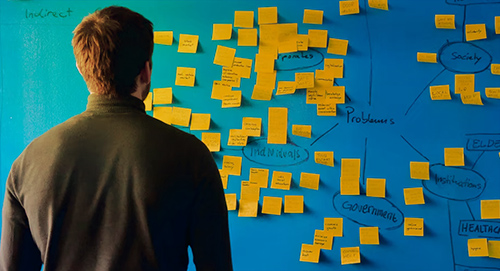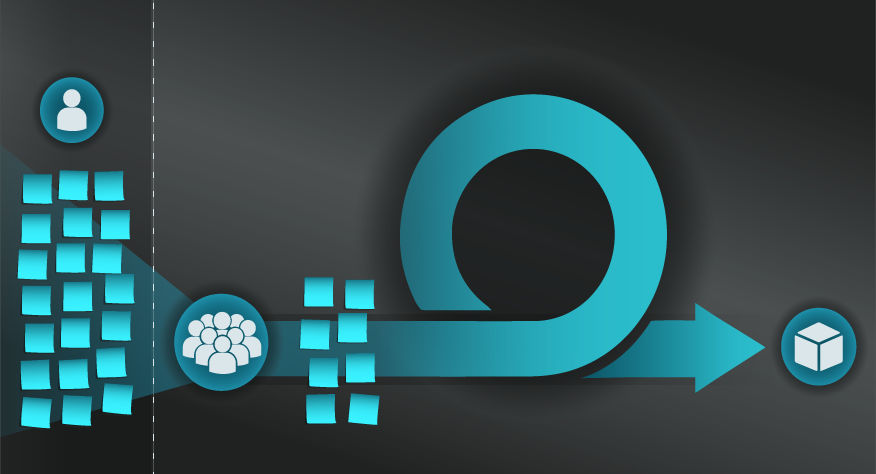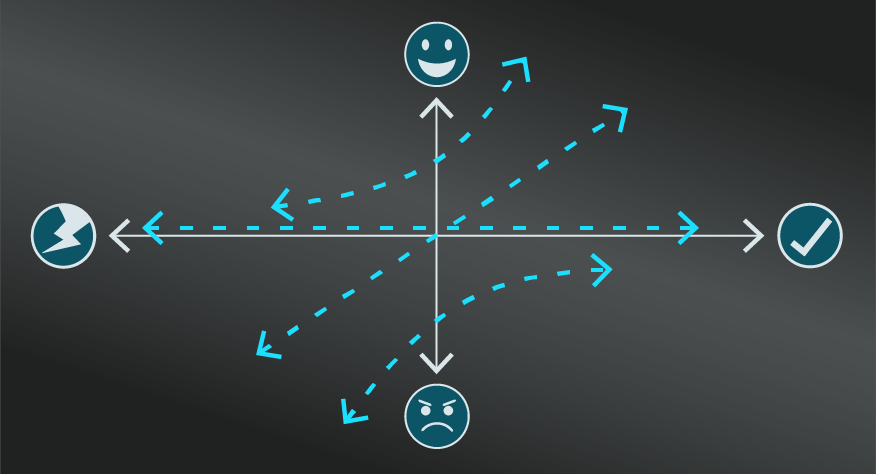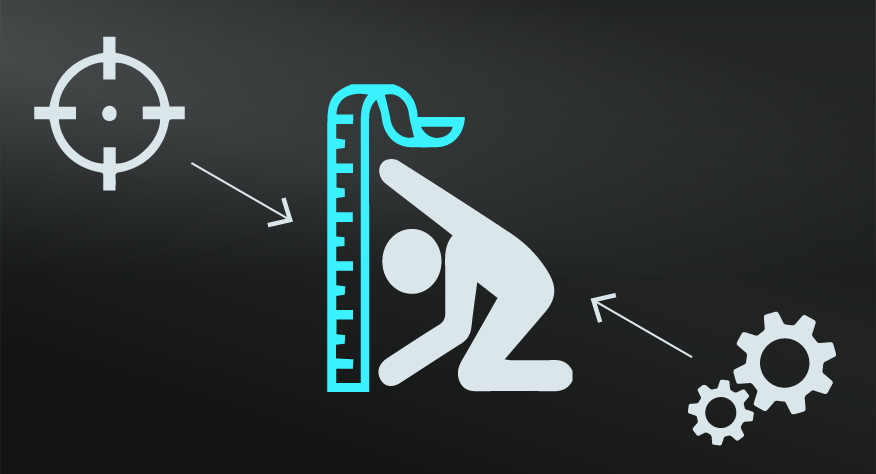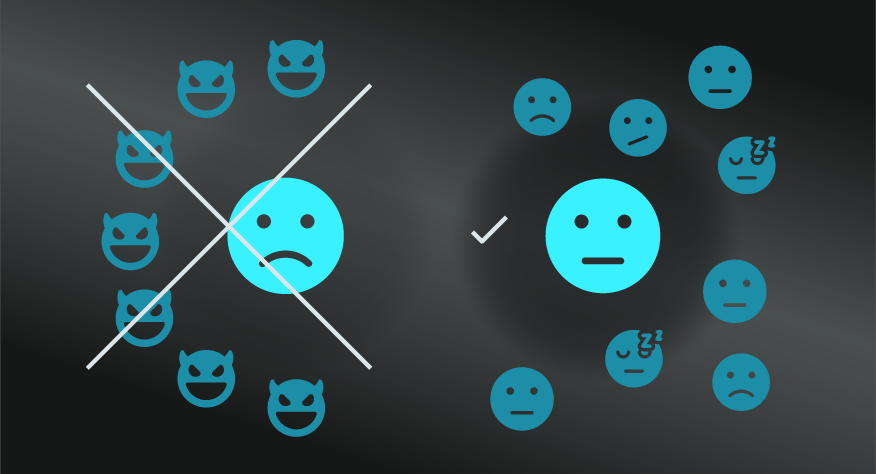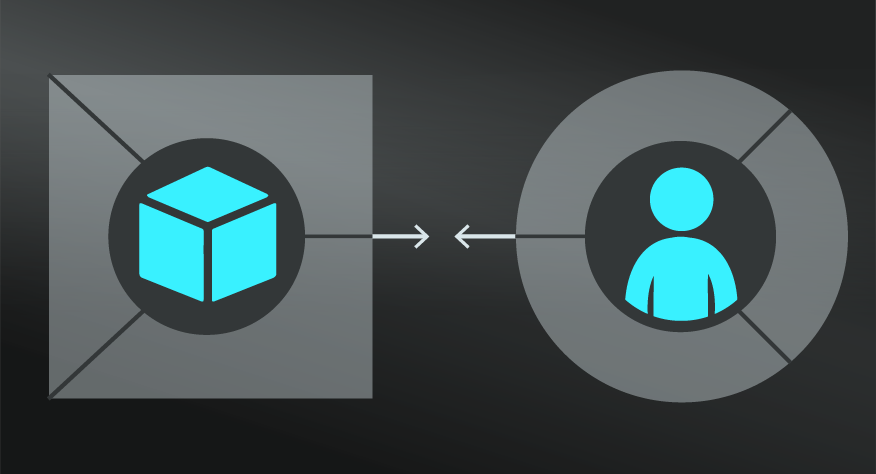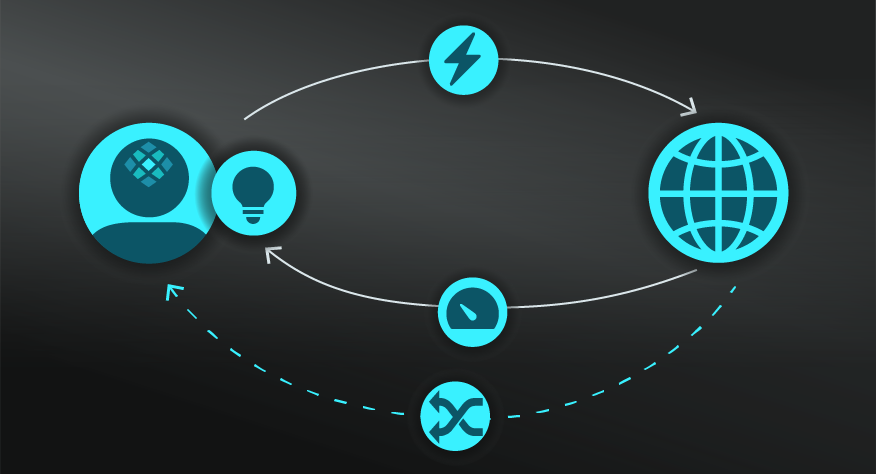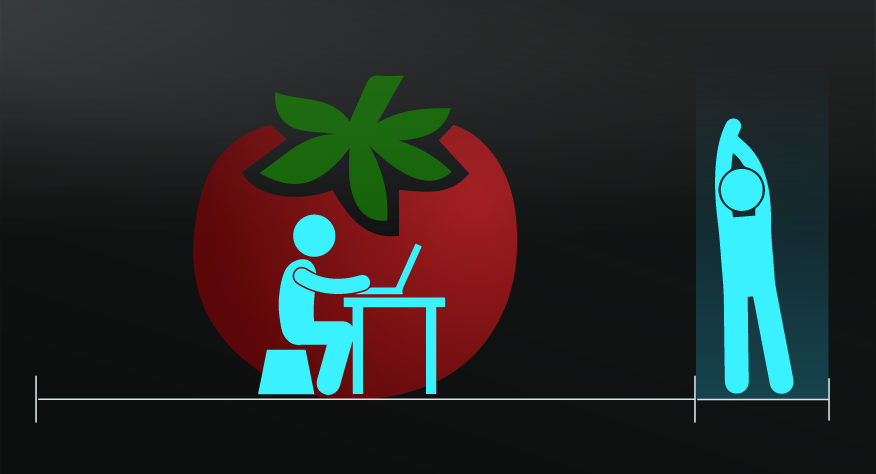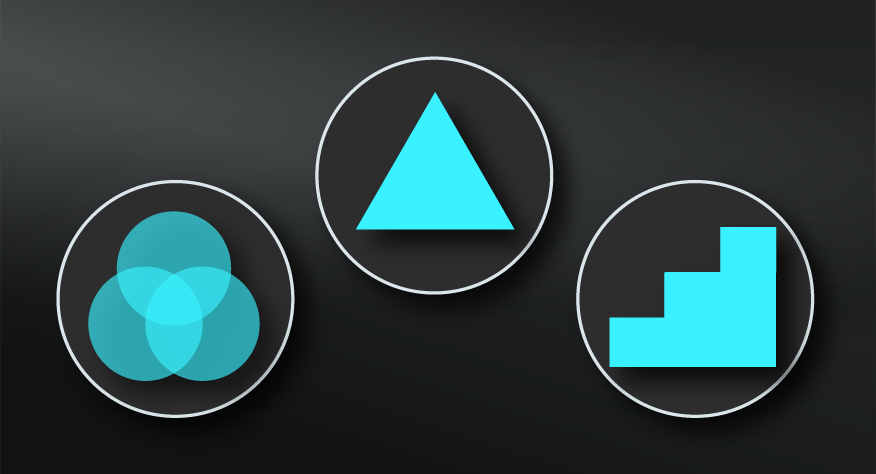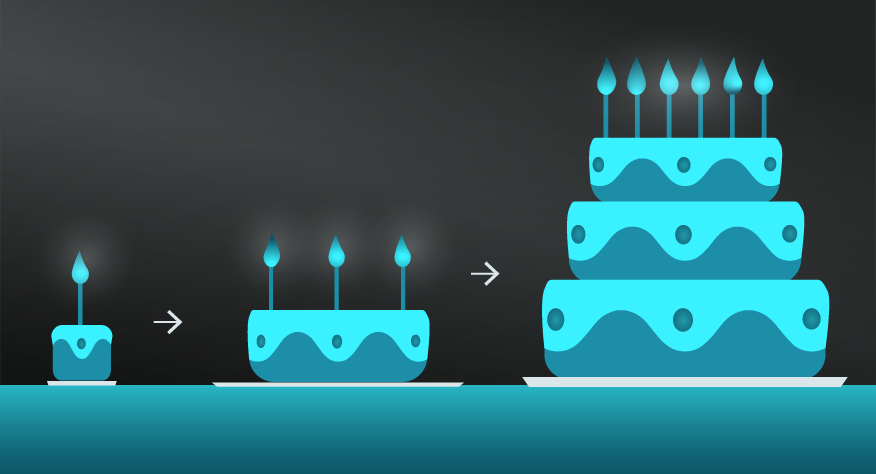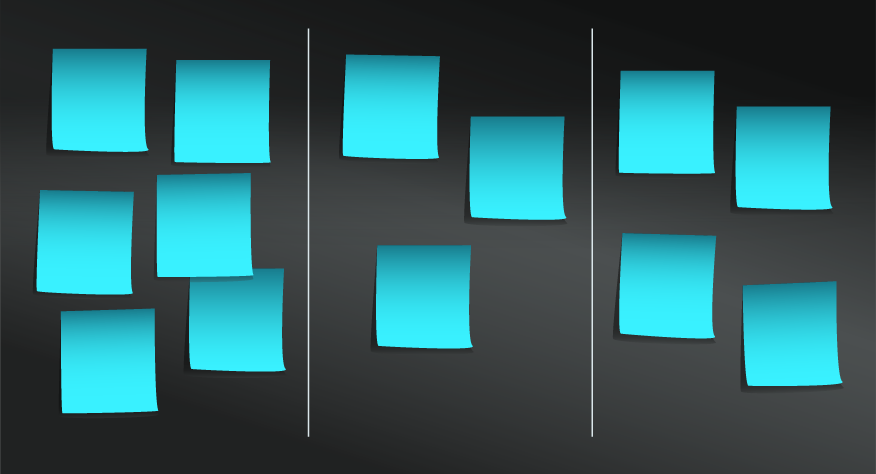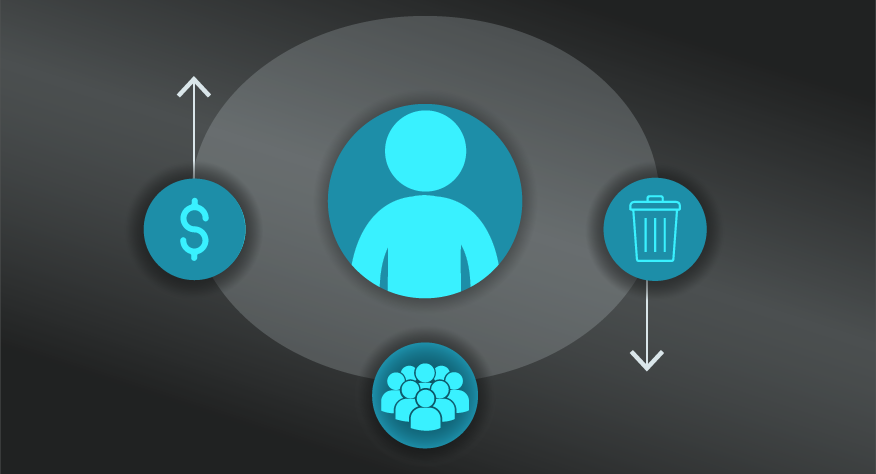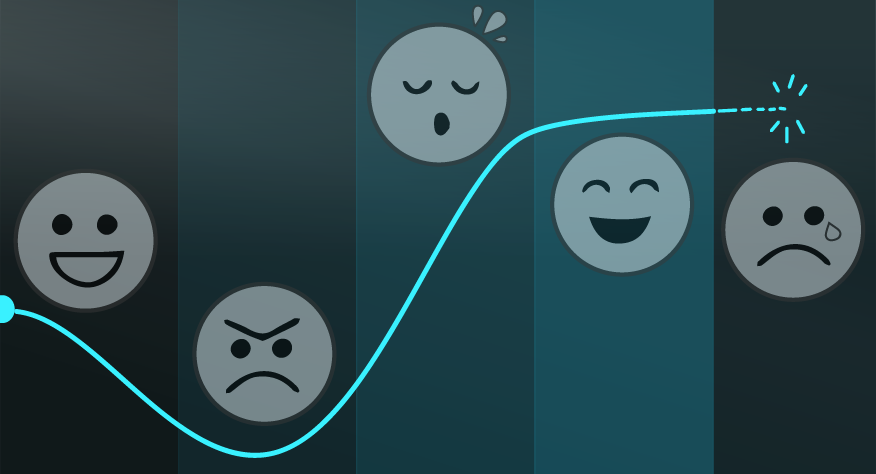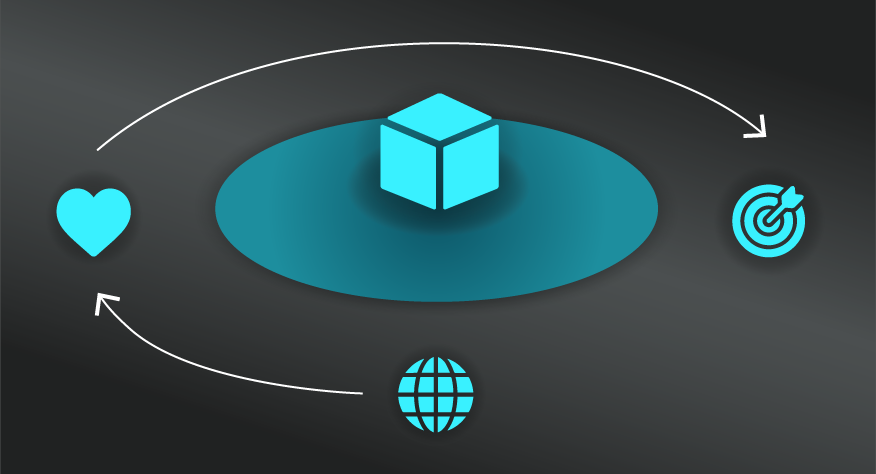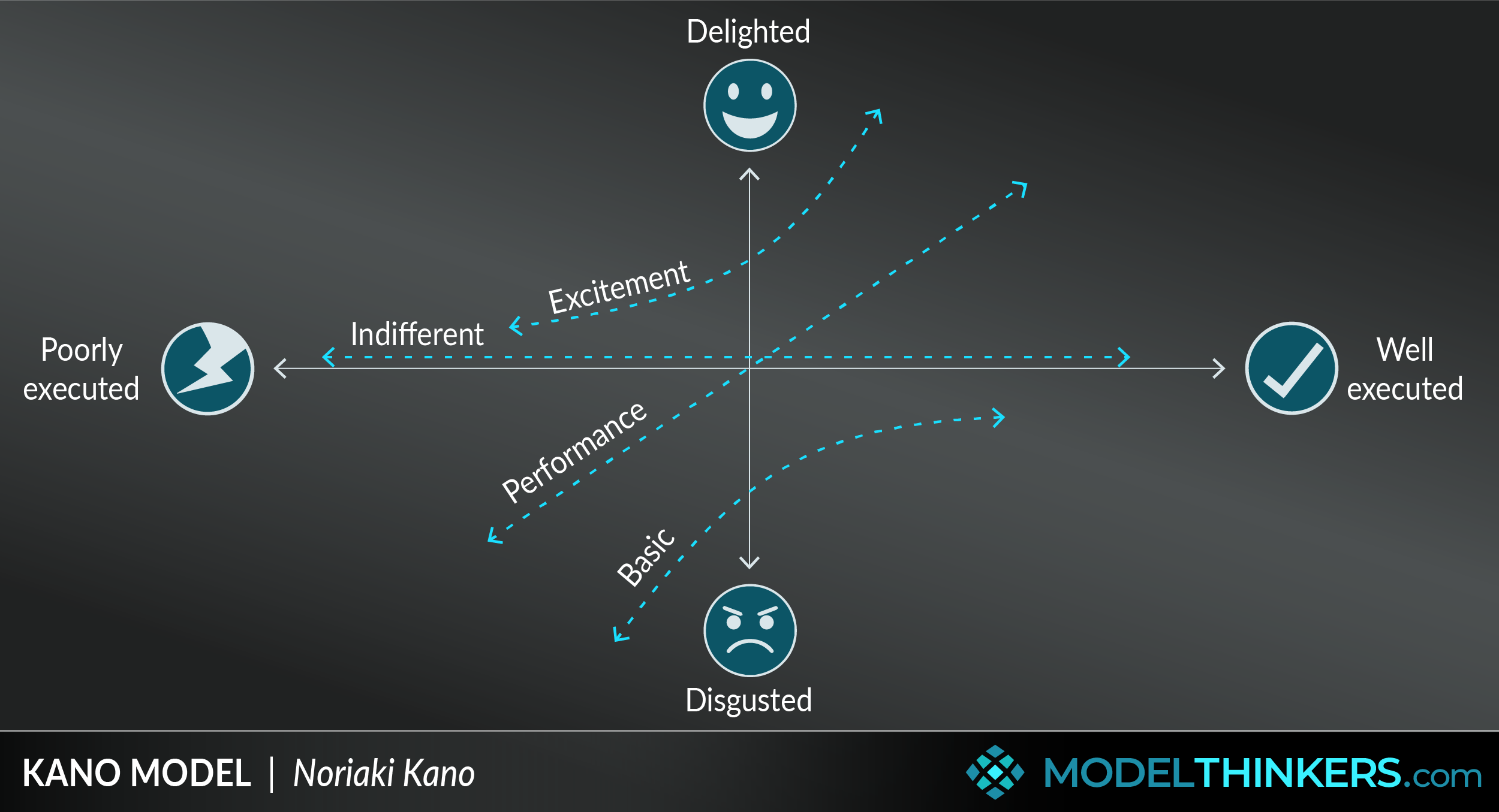
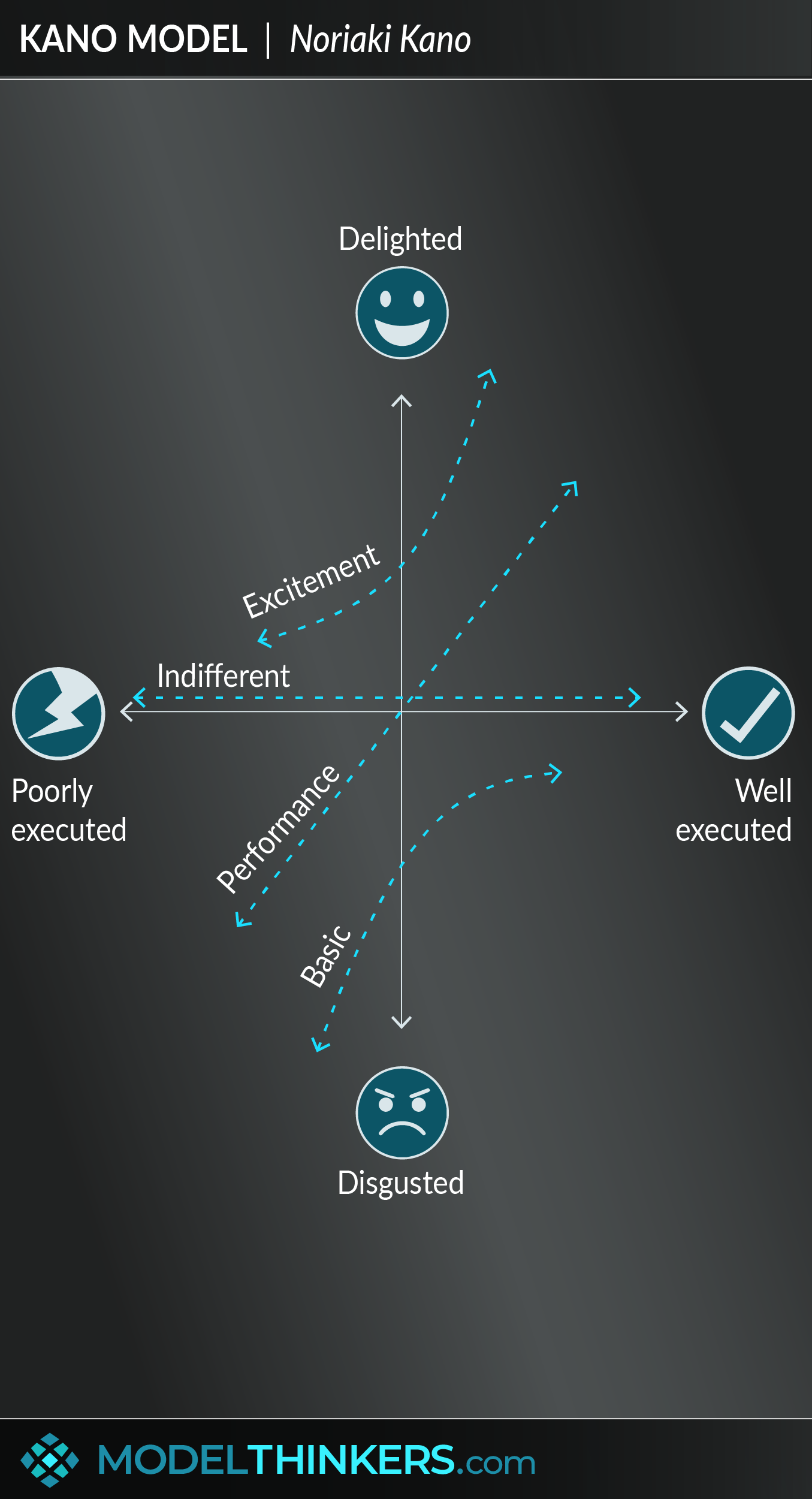
 0 saved
0 saved
 18K views
18K views








Product features often seem like a never-ending list of possibilities. There are several models that address this challenge, however, the Kano Model is unique for its use of customer expectations versus a view on execution as a lens to understand the required investment and return on that investment.
The Kano Model is a product prioritisation method that maps customer satisfaction versus the level of execution to categorise options as basic, performance, indifferent and excitement.
UNDERSTANDING THE CATEGORIES.
These categories inform a product roadmap, specifically:
- Basic: these are ‘must have’ expected features that will produce limited customer satisfaction but are required to prevent dissatisfaction. They have to be included but will have diminishing returns. You have to invest here to meet expectations, but your investment is to prevent dissatisfaction rather than increase to high levels of satisfaction.
- Performance: these are functionality elements that, when invested in, have a proportional and linear increase in customer satisfaction. Essentially, the more you invest here, the more you will impact on customer satisfaction e.g. increasing speed, data availability, capacity etc.
- Indifferent: these simply do not impact on customer satisfaction, no matter how they are executed. They’re peripheral to the product and should be ignored.
- Excitement: these are surprising ‘value adds’ that will increase customer satisfaction even when not well executed, largely because of low initial expectations. The excitement category will provide high initial results but customer expectations adapt fast, and it will tend to become basic over time as customer needs adjust.
APPLYING THE CATEGORIES.
These categories act as a rough conceptual framework to understand different areas of investment, though it does require further experimentation and practice to develop an effective balance between basic, excitement and performance. Because expectations shift, time will drag features down the grid, so things that are categorised as excitement today will likely be basic after the novelty wears off and they become expected.
See the Actionable Takeaways below for specific questions to ask to rate your features.
IN YOUR LATTICEWORK.
The Kano Model is a powerful prioritisation tool based on types of customer satisfaction. In that respect, it connects with both other models that explore prioritisation and customer attitudes.
In using the Kano Model, you might also want to consider the RICE Score, Kanban, MOSCOW Method, and Impact Effort Matrix as alternatives to prioritise.
You might also want to consider the Minimum Viable Product which typically represents the implementation of features in the ‘basic’ category as a priority and Personas to help define segments and differences within an audience group.




- Identify products and or product features to consider.
Establish the scope of the conversation as well as the stakeholders to participate in the ranking process.
- Rank products according to customer satisfaction vs functionality.
Explore where the categories lie in the grid, particularly as their functionality increases between the most basic element to a more mature delivery.
- Engage with your audience.
Customer investigation would ideally include interviews and data on similar initiatives. For the interviews. Common categories for customer interviews include asking:
- If you had (feature), how do you feel?
- If you didn't have (feature), how do you feel?
Then the typical Kano questions will include judgements of the addition or lack of relevant features along the following options:
- I like it
- I expect it
- I'm neutral
- I can tolerate it
- I dislike it
- Categorise the features.
Use the information gathered to categorise products and/ or product features. Particularly focus on the three desirable category areas of basic, performance and excitement. Remove indifferent features.
- Prioritise and act on the road map.
Use these findings to inform a conversation about priorities. There is no set rule here, it’s about:
- Delivering on the basics as cost-effectively as possible, understanding that they will provide diminishing returns.
- Identifying excitement opportunities that can be invested in for ‘quick and cheap wins’ - though this innovation space can be risky and will likely require a level of experimentation.
- Consistently investing in performance to grow customer satisfaction over time.
As with all such tools, the Kano Model is dependent on the accuracy of the data behind it, so it is heavily reliant on effective customer engagement to predict levels of customer satisfaction. This can be problematic when investigated via surveys without context.
Another challenge of this approach, albeit one that is commonly acknowledged, is the impact of time. A Kano assessment of customer attitudes should merely be viewed as a snapshot, as customer satisfaction will change as new features become normalised.
Bose development team.
This document from the Center for Quality Management Journal is an in-depth, slightly academic, investigation of the Kano model and includes a case study from Bose. They explain: “Kano lets us categorize each requirement according to how customers define the relationship between the degree to which the requirement’s functionality is present in the product concept and the customer’s perceived level of satisfaction. The Kano survey data gives the development team a basis for decisions with regard to leveraging resources. Essentially the team translates the Kano results into a customer requirement weighting factor.”
The Kano model is a prioritisation tool that considers types of customer satisfaction. In that sense it connects with both other prioritisation models and ones that explore customer attitudes.
Use the following examples of connected and complementary models to weave the Kano model into your broader latticework of mental models. Alternatively, discover your own connections by exploring the category list above.
Connected models:
- RICE score and impact effort matrix: as alternative methods of prioritisation.
- Net promoter score: examining customer expectations and satisfaction can be used in conjunction or overlaid with the kano model.
Complementary models:
- Minimum viable product: which represents the implementation of features in the ‘basic’ category as a priority.
- Personas: in defining segments and differences within an audience.
- Agile methodology: providing an iterative approach which requires ongoing prioritisation.
- Design thinking: to consider a customer centric approach to design.
The Kano model was developed by Noriaki Kano, considered to be a key leader in the development of quality management, in the late 1970s and early 80s. He is a professor emeritus at the Tokyo University of Science and is the author of a Guide to TQM in Service Industries.
 My Notes
My Notes
Oops, That’s Members’ Only!
Fortunately, it only costs US$5/month to Join ModelThinkers and access everything so that you can rapidly discover, learn, and apply the world’s most powerful ideas.
ModelThinkers membership at a glance:






“Yeah, we hate pop ups too. But we wanted to let you know that, with ModelThinkers, we’re making it easier for you to adapt, innovate and create value. We hope you’ll join us and the growing community of ModelThinkers today.”
